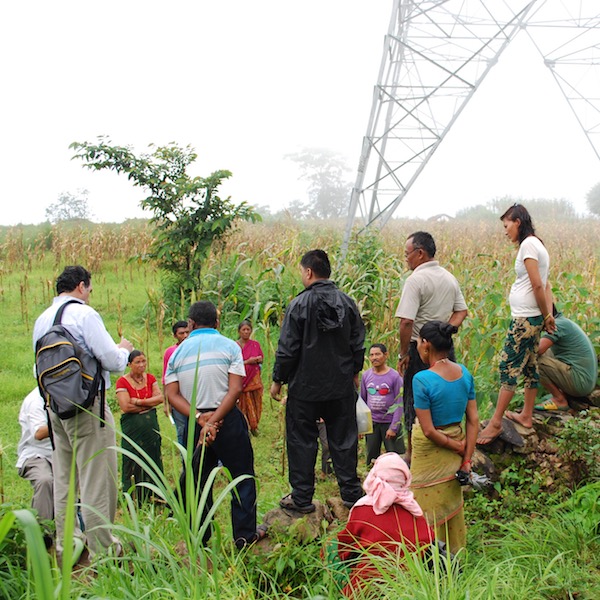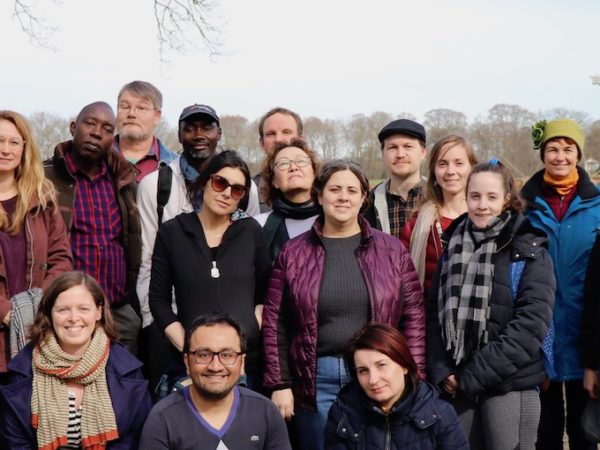Accountability Office FAQs
The following Q&A provides an overview of the accountability offices tied to international investment. If you are an affected person, community, or advocate interested in pursuing an accountability office complaint, please see our Accountability Resource Guide for more information and strategic considerations.
What is an accountability office?
An accountability office is a forum through which individuals, communities, or other stakeholders can raise concerns when they face actual or potential harm as a result of a public or private sector project, investment, or business-related activity. Also referred to as independent accountability mechanisms (IAMs), grievance mechanisms, or complaints offices, accountability offices are situated within an institution and receive complaints directly from people harmed by the activities of that institution. For example, communities affected by the activities of the World Bank Group’s private sector arm, the International Finance Corporation, can raise a complaint to its Compliance Advisor Ombudsman.
Accountability offices typically address complaints through two primary functions: dispute resolution and/or compliance review (described below). They operate independently of the institution in which they are housed but report to the institution’s highest level of leadership, such as its board or president, and rely on the institution for funding.
Read more about our policy work to advance accountability offices so that they achieve best practice principles of independence, fairness, transparency, professionalism, accessibility, and effectiveness. Note that the accountability offices in which we specialize at Accountability Counsel are distinct from project-level grievance mechanisms (or operational level grievance mechanisms) that are sometimes created by an operating company or government agency at a local level.
—
When is an accountability office available, and what types of complaints do these offices receive?
Whether an accountability office is available depends on what institution or institutions are providing the financing. Currently, accountability offices exist at many multilateral institutions (such as the World Bank, regional development banks, and United Nations agencies) and national agencies (including bilateral development banks and export promotion agencies). In addition, countries that adhere to the Organisation for Economic Co-operation and Development’s (OECD) Declaration on International Investment and Multinational Enterprises utilize offices known as National Contact Points to hear complaints (i.e., “specific instances”) concerning alleged violations of the OECD Guidelines for Multinational Enterprises. The OECD Guidelines for Multinational Enterprises are a component of the Investment Declaration and include standards on the environment, labor rights, human rights, corruption, and other issues.
Around the world, approximately 66 accountability offices presently exist to address complaints about harm caused by both public sector and private sector financing. Some of these offices impose a time limit on filing a complaint. See our Accountability Resource Guide for more information.
Accountability offices primarily receive complaints concerning the environmental and social risks and impacts of projects financed or supported by the institution in which the office is housed. Complaints may include concerns about unfair labor practices, potential health impacts, and fair compensation for land. Our Communities cases illustrate common issues raised by communities affected by internationally financed projects.
—
Why use accountability offices instead of courts?
Barriers often prevent the communities most in need of a platform from raising a grievance, speaking out, and receiving redress, either through litigation, media campaigns, or even the ability to simply voice concerns and organize locally. Laws are often inadequate and protect corporations over people and the environment; some institutions are protected by a form of limited immunity from lawsuits, even for their role in intentional abuses; and where legal protections do exist, barriers include the costs of litigation, lengthy delays, corruption in judicial systems, discrimination against vulnerable populations, language barriers, and inadequate legal assistance.
Accountability Counsel strongly believes that all people should have access to a judicial proceeding or court to address corporate or institutional abuses. We are deeply supportive of corporate accountability advances and challenges to the immunity of international organizations. But where litigation is not an option, and sometimes where it is an option, accountability offices can provide a pragmatic and viable way to raise a grievance and achieve a remedy. By using an accountability office, communities can avoid many of the barriers that formal judicial proceedings present. They can be efficient, flexible, and cost-effective means of addressing and resolving disputes. Additionally, these offices often have advisory departments that can provide the institution with useful lessons to improve the institution’s policies and practices for future projects.
While accountability offices have limitations and it is important to have realistic expectations for what can be achieved through a complaint process, our cases in Mexico, Haiti, and Mongolia demonstrate the potential transformative power that these offices hold for communities to prevent and/or remediate harm.
—

Accompanying villagers of Sindhuli District of Nepal during a compliance investigation visit.
What tools do accountability offices provide to address a community complaint?
Accountability offices provide two main tools to address grievances: compliance review and dispute resolution.
Compliance Review
Compliance review (also called compliance investigation or compliance audit) is the process of probing whether an institution violated its own policies or procedures by engaging in activities that lead to the harm described in a complaint. Typically, an investigation team conducts a review of all of the documents related to the institution’s activity, interviews all of the relevant players at the institution, and visits the site of the activity (i.e., a village where farmers lost their land or where water was contaminated). There, they inspect the site, interview community members and other stakeholders, and learn about the local context.
The investigation team will then produce a compliance review report with findings about the project’s compliance and/or non-compliance with the institution’s policies and procedures. The report is submitted to the institution’s leadership and made available to the public, often with recommendations. The next steps, including any remedial measures, are left to the determination of the institution’s leadership. Remedial measures can include compensation, additional consultation, and changes to the project’s design and implementation.
Examples of compliance reviews include Accountability Counsel’s cases in India, Nepal, and Papua New Guinea.
Dispute Resolution
Dispute resolution (also called conflict resolution) is a process that facilitates a dialogue between affected people, project sponsors, and other local stakeholders toward resolving the issues raised in a complaint. Typically, an accountability office will hire a neutral mediator or facilitator to aid the process. Dispute resolution frequently entails information-sharing, utilization of independent experts to better understand the extent of harm and possible solutions, and negotiation between the parties. The process often takes several months. Agreements reached through dispute resolution are typically followed by a monitoring period where the accountability office reports on the progress of implementing agreed-upon commitments.
A hallmark of dispute resolution in the accountability office context is the challenging imbalance of power between the community and the other parties. Accountability Counsel’s Communities lawyers work to balance that power differential so communities can effectively advocate on their own behalf throughout the dialogue process.
Examples of dispute resolution include Accountability Counsel’s cases in Mongolia, Mexico, and Peru.
—
What are the institutional benefits of having an accountability office?
Accountability offices help institutions to understand and mitigate against the risks that their operations pose not only to local communities but also to the institution itself. As the United Nations Guiding Principles on Business and Human Rights recognize, the failure to weigh actual and potential human rights impacts on communities places institutions “at risk – in reputational, financial, political and potentially legal terms – for supporting any such harm.” By providing a forum for the institution to address community concerns before they escalate to larger conflicts, accountability offices diminish the likelihood that such financial and reputational risks materialize.
In addition to mitigating risk, accountability offices allow institutions to use their time and resources more efficiently, respond swiftly and provide predictable settlement of claims, and learn valuable lessons applicable to future investments and operations. This approach to risk management paves the way for institutions to protect their reputations as promoters of poverty reduction and development.
—
What are the limitations of using an accountability office?
While accountability offices can provide some measure of redress when operating properly, structural limitations across the accountability office system, as well as weaknesses specific to individual offices, often hinder a meaningful response to affected communities. These limitations include:
- Failure of institutions to deliver on promises made through an accountability office process due to lack of enforcement power, including remediating harm revealed by a compliance investigation or implementing agreements reached through a dialogue process;
- Incentive structures that reward staff for the volume of financing, rather than rewarding good environmental and social due diligence and sustainability; and
- Lack of resources designated to facilitate timely redress when harm does occur.
For this reason, our policy advocacy not only focuses on improving accountability office procedures and practices, but also on promoting a culture of institution-wide accountability through systemic reforms. Our aim is to create a strong accountability ecosystem throughout international finance that is responsive to communities on the ground.

